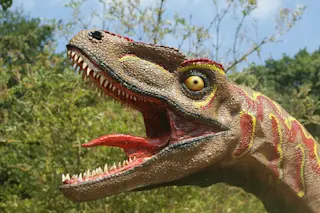Here's a big Nope-asaurus for ya: Reconstructions of most dinosaurs with their tongues out and wriggling like this guy's are wrong, according to a new study. (Credit: Spencer Wright) When it comes to fleshing out dinosaurs, so to speak, based on their nearest living relatives, paleontologists can look to birds or the crocodilians. But a new study says depicting most dinosaur tongues like those of birds with particularly mobile mouthpieces, well, that's just a crock. Tongues aren't much more than a hunk of mouth muscle without the hyoid apparatus, a group of bones that varies significantly between species and provides your mouthmeat with both an anchor and a kind of scaffolding that determines its position and range of motion. We puny humans are left with just a single hyoid bone, but many other animals have elaborate, highly specialized hyoid structures that adapted to exploit specific environments or diets. Take hummingbirds, ...
A Lot Of Dinosaurs Couldn't Stick Out Their Tongues
New study reveals dinosaur tongues reconstruction often misrepresents anatomy, linked to their hyoid structures. Discover the truth!
More on Discover
Stay Curious
SubscribeTo The Magazine
Save up to 40% off the cover price when you subscribe to Discover magazine.
Subscribe













